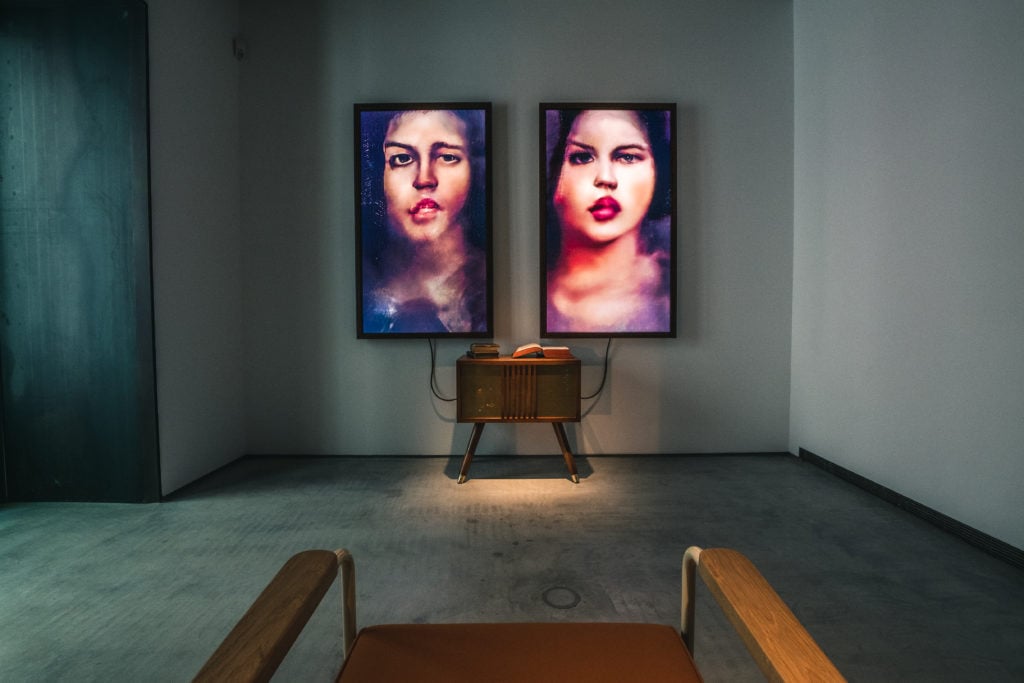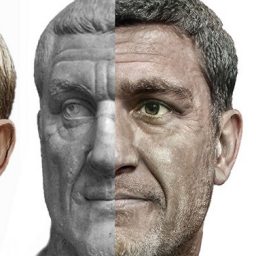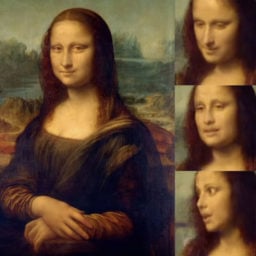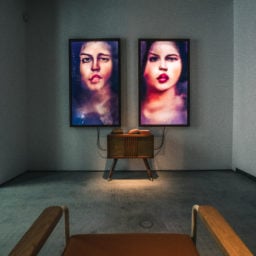Following Christie’s tremendously successful and much-debated inclusion of an AI artwork in an auction last October—selling it for 43 times its estimate—the auction house’s archrival, Sotheby’s, is now preparing to test these uncanny waters by selling a work powered by artificial intelligence too. Heading to auction in Sotheby’s day sale in London on March 6, the occasion reaffirms a brave new fact of the art market: AI art is not going away.
This time, the artwork in question is an installation by Mario Klingemann, an early adopter of the field in which computer technology meets art—a movement the artist dubs “neurography.”
Klingemann’s installation, titled Memories of Passersby I (2018), consists of a wooden console table containing the AI computer’s “brain” and two framed screens. The machine works in real time to spit out unsettling portraits of imagined male and female faces onto the screens. It is estimated to sell at £30,000-40,000 (or $39,000-52,000).
Unlike previous AI artworks that have been sold, which have been human-curated final products, Klingemann’s machine is unique as it creates its portraits while you’re looking at it. The installation gives viewers the unique chance to, as Sotheby’s contemporary art specialist Marina Ruiz Colomer put it in a statement, “watch an AI brain think in real time.”
The unreal images conjured by the neural network are based on its training on a database of portraits from the 17th to 19th centuries, which share Klingemann’s own bias towards surrealistic work. Many of the generated portraits end up taking on a anxiety-inducing quality Klingemann calls the “Francis Bacon effect,” referring to the alienated paintings of the great 20th-century artist.
Klingemann was a pioneer in experimentation with neural networks and art, and was instrumental in creating many models now used by other artists working in the field. Speaking to artnet News, the artist says it “feels good” to finally be recognized by the official art world through the inclusion in the Sotheby’s sale, adding that he “honestly did not see it coming.”
The technology used in the artwork heading to auction is cutting-edge, as no one else has been able to create a machine that can work to create portraits at such speed and at such a high resolution (and that can also fit into a small box to boot).
“I guess I have to thank everyone who plays computer games,” Klingemann says. “Thanks to the high demands of games, graphics cards have become extremely powerful and versatile.” He likens the power consumption of the system to the energy needed to run a fridge. That said, the real-time aspect and the high resolution took “quite some time” to perfect, according to the artist. All in all, he says, he spent about three months training the models, writing the code, and designing the installation.
Klingemann has chronicled his experiments over the past three years on his Twitter feed.
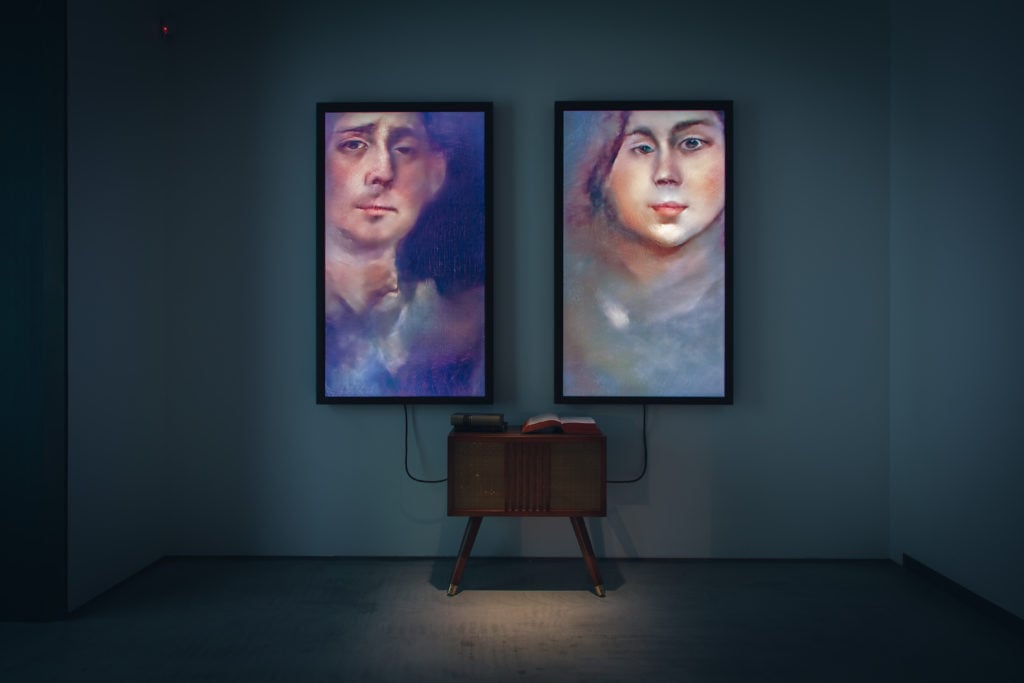
Mario Klingemann, Memories of Passersby I (2018). Image courtesy Sotheby’s.
There are three editions of the work that is being sold at Sotheby’s, as well as two artist’s proofs—although as each edition constantly works to create unique portraits, no two will ever be the same. Klingemann notes that the AI within the work itself is “encrypted and protected, so you will not be able to copy them out of the machine or look at them to learn my little production secrets.”
The auction house discovered Klingemann’s work after one of its specialists spotted it at a private museum in Spain. “One edition of Memories of Passersby I is in the private museum of Coleccion Solo in Madrid,” the artist explains. “After that, one discussion led to another, and here we are!”
Sotheby’s is presenting the piece as a breakthrough. “It is the nature of Contemporary Art to push boundaries,” Sotheby’s Colomer said in the statement. “AI art is the latest innovation winning its place in art history books, and Klingemann’s work stands on the precipice of an exciting new era in our field.”
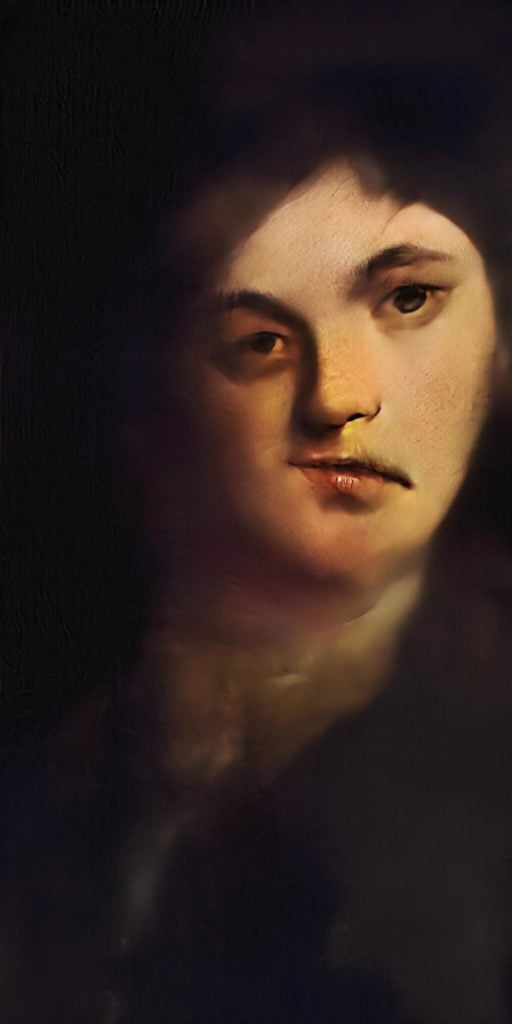
Mario Klingemann, Portrait of a Man . Image courtesy Sotheby’s.
For now Klingemann, a self-avowed “control freak,” is in for a nerve-racking wait. “An auction is a very public space, so the idea that my work, and people’s reaction to it, will be ‘out there’…it’s a bit like waiting for your grades after a school exam,” he says.
The artist recently accepted the RE:HUMANISM prize for work created with artificial intelligence at the National Gallery on January 23, and was also a recent recipient of the Lumen Prize for Art and Technology. His work has been shown in institutions including MoMA, the Met, and the Centre Pompidou in Paris. In May, Klingemann will feature in the Barbican’s new exhibition “AI: More Than Human.”
See some of the portraits generated by Memories of Passersby I (2018) below.
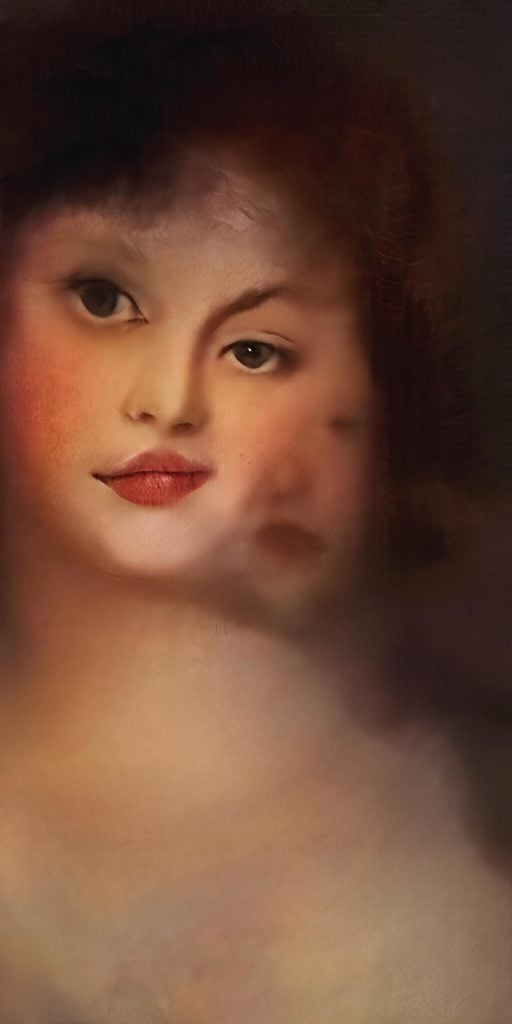
Mario Klingemann, Portrait of a Woman . Image courtesy Sotheby’s.
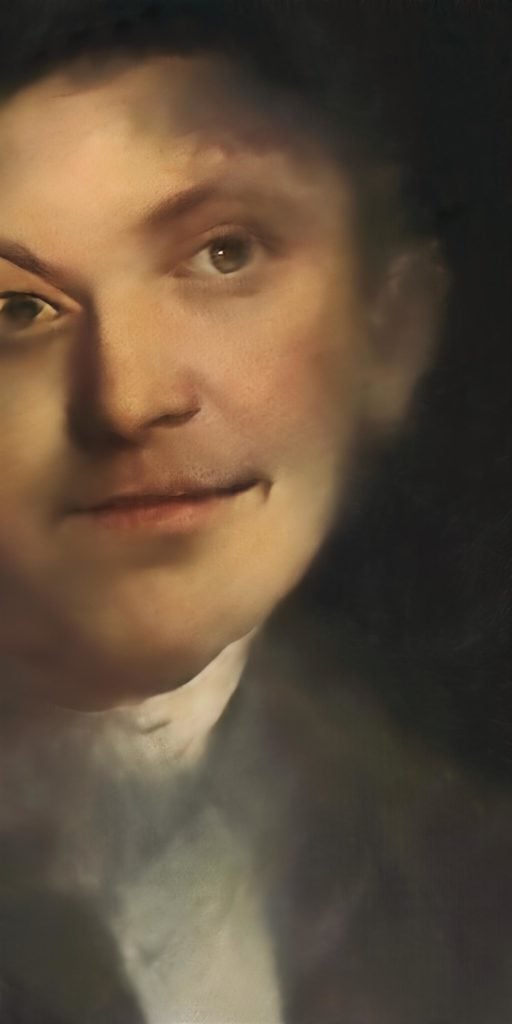
Mario Klingemann, Portrait of a Man . Image courtesy Sotheby’s.
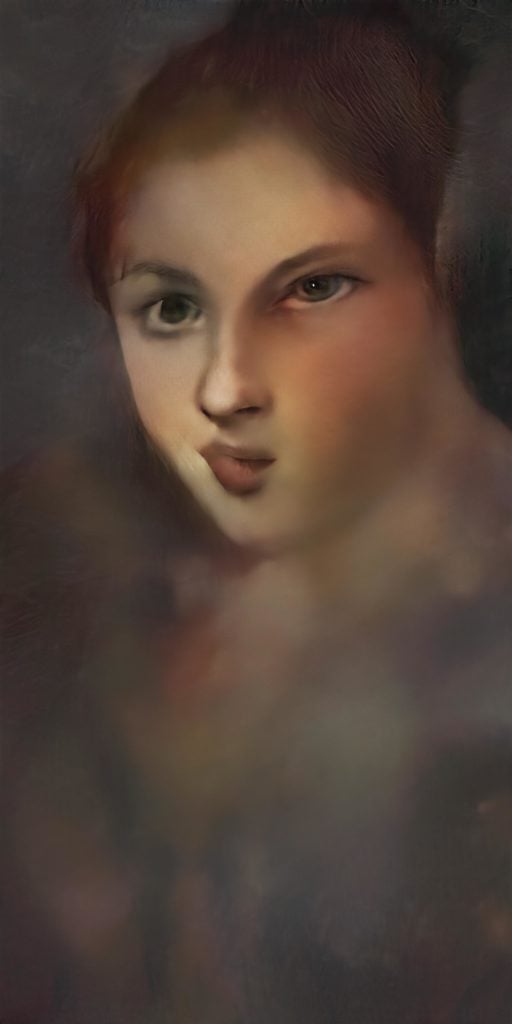
Mario Klingemann, Portrait of a Woman . Image courtesy Sotheby’s.
